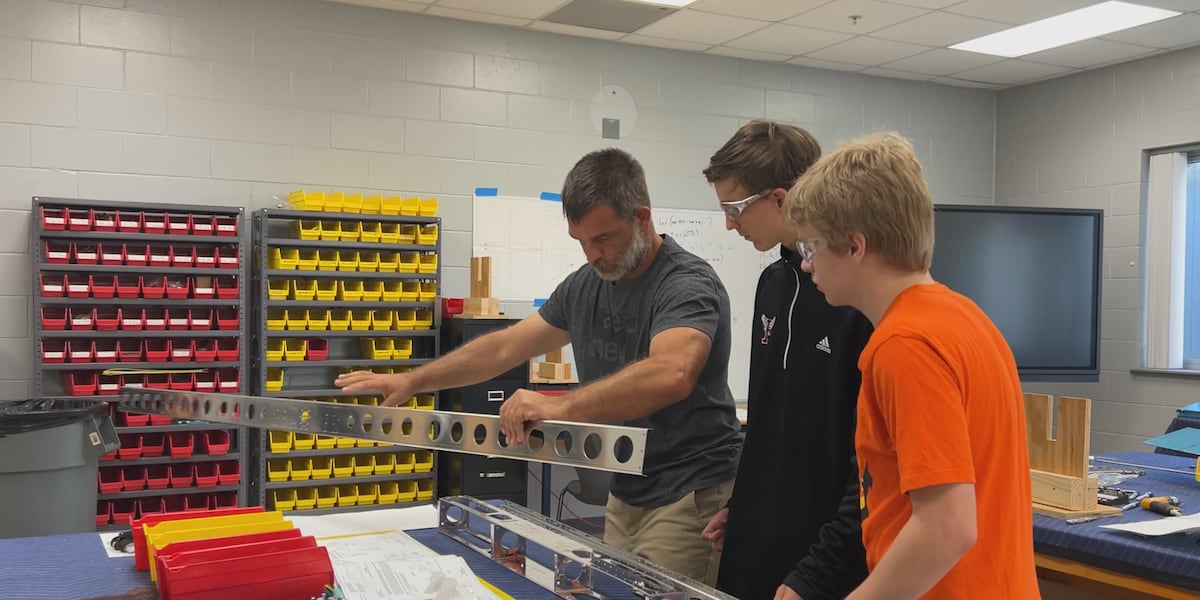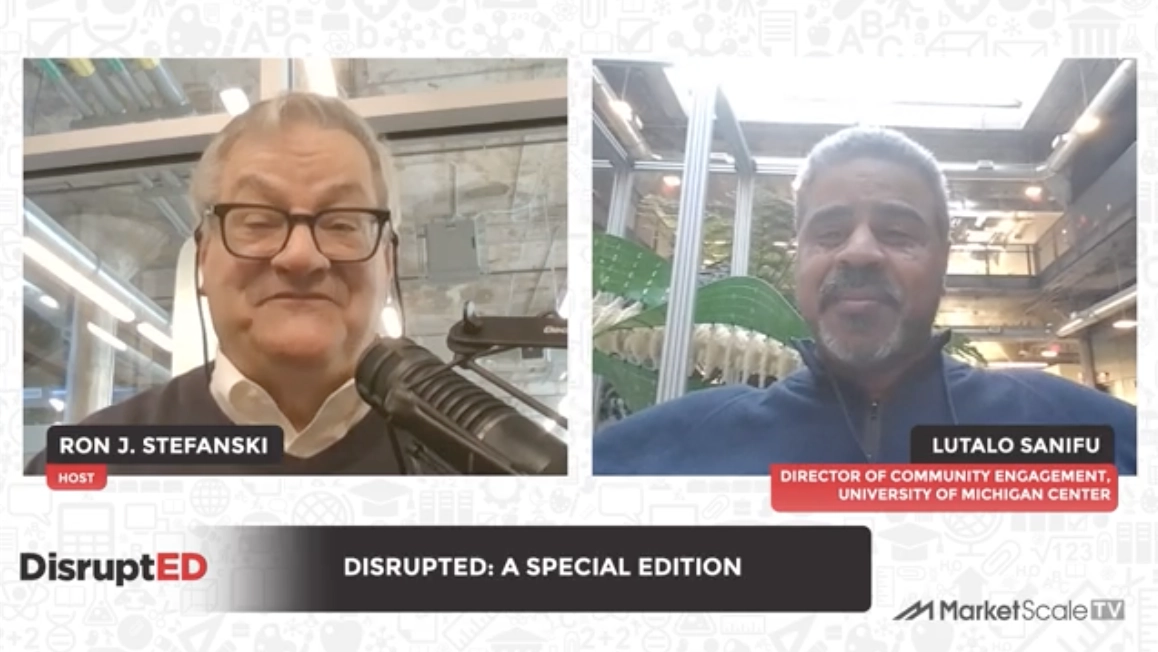Grant increasing access to career opportunities for Franklin County students – WCTV

Franklin County CTE Initiative: A Report on Alignment with Sustainable Development Goals
Executive Summary
A grant of nearly $300,000 from the Florida Department of Education is enhancing career and technical education (CTE) in Franklin County, Florida. This initiative directly supports the achievement of several United Nations Sustainable Development Goals (SDGs) by providing students with critical skills for future employment. The program focuses on expanding access to vocational training, thereby aligning local educational strategy with global objectives for quality education, economic growth, and innovation.
Project Overview and Strategic Investments
The funding facilitates the introduction and enhancement of multiple forward-looking CTE programs designed to prepare students for diverse post-secondary pathways, including direct entry into the workforce, higher education, or military service.
- Primary Funding: Approximately $300,000 from the Florida Department of Education.
- Additional Resources: Other state grants have enabled the acquisition of advanced learning technologies, including medical robots and virtual reality (VR) systems.
- Key Programmatic Enhancements:
- An aviation program where students construct an airplane.
- Upgraded equipment for the welding program.
- New courses in computer programming.
- A forthcoming curriculum in artificial intelligence (AI).
Advancing SDG 4: Quality Education
The project is fundamentally aligned with SDG 4, which aims to ensure inclusive and equitable quality education and promote lifelong learning opportunities for all. The initiative specifically addresses Target 4.4 by substantially increasing the number of youths with relevant technical and vocational skills for employment.
- Skills for Employment: According to CTE Coordinator David Hughes, the program’s purpose is to prepare students for their future, regardless of the path they choose. This focus on practical, real-world skills ensures graduates are better equipped for the demands of the modern economy.
- Inclusive Learning Tools: The use of VR systems allows students to explore vocational fields like welding in a simulated environment before committing to a specific track. This approach, as noted by teacher Rachel Autry, provides a low-risk opportunity for students to discover their interests and aptitudes.
Supporting SDG 8: Decent Work and Economic Growth
By equipping students with in-demand skills, the CTE expansion directly contributes to SDG 8, which promotes sustained, inclusive, and sustainable economic growth, full and productive employment, and decent work for all.
- Pathways to Economic Security: The program provides students with tangible career prospects. Harley Mattingly, a senior in the aviation class, stated the program gives him confidence that he will “be able to make a good income” and “have a proper job,” directly linking the educational initiative to individual economic empowerment and stability.
- Local Workforce Development: By developing a skilled local labor pool in technical fields, the initiative supports regional economic resilience and growth.
Fostering SDG 9: Industry, Innovation, and Infrastructure
The initiative promotes SDG 9 by focusing on modern industries, integrating innovative technologies into education, and contributing to the development of local educational infrastructure.
- Innovation in Curriculum: The introduction of curricula in aviation, AI, and computer programming prepares students for careers in high-tech, innovative industries.
- Technological Integration: The use of medical robots and VR learning systems demonstrates a commitment to leveraging advanced technology to enhance the educational experience and prepare students for a technology-driven workforce.
Achieving Goals through SDG 17: Partnerships for the Goals
This project exemplifies SDG 17 by demonstrating a powerful multi-stakeholder partnership to achieve development goals, while also addressing SDG 10 (Reduced Inequalities) by expanding local opportunities.
- Strategic Collaboration: The initiative represents a successful collaboration between the Florida Department of Education, the Franklin County school district, and Haney Technical College.
- Sustainable Pathways: The plan for Haney Technical College to establish a satellite campus at the Apalachicola Airport creates a sustainable educational infrastructure. This partnership provides a seamless transition for students from secondary to post-secondary training within their community, reducing geographic and economic barriers to continued education.
Analysis of Sustainable Development Goals in the Article
1. Which SDGs are addressed or connected to the issues highlighted in the article?
- SDG 4: Quality Education – The article’s central theme is the enhancement of educational opportunities through a grant that funds career and technical education programs. It focuses on providing students with practical skills and knowledge for their future.
- SDG 8: Decent Work and Economic Growth – The programs are explicitly designed to prepare students for the workforce. The article mentions a student’s appreciation for knowing he will “be able to make a good income” and “have a proper job,” which directly relates to achieving productive employment and decent work.
- SDG 9: Industry, Innovation, and Infrastructure – The grant facilitates the development of modern educational infrastructure, including new welding equipment, medical robots, and virtual reality systems. The introduction of courses in aviation, computer programming, and artificial intelligence promotes innovation and prepares students for modern industries.
2. What specific targets under those SDGs can be identified based on the article’s content?
-
SDG 4: Quality Education
- Target 4.4: “By 2030, substantially increase the number of youth and adults who have relevant skills, including technical and vocational skills, for employment, decent jobs and entrepreneurship.” The article directly addresses this by describing new programs in aviation, welding, computer programming, and AI, which are designed to provide students with relevant technical and vocational skills for future careers.
- Target 4.3: “By 2030, ensure equal access for all women and men to affordable and quality technical, vocational and tertiary education, including university.” The partnership with Haney Technical College to create a satellite campus at the Apalachicola Airport is a clear effort to increase local access to post-secondary vocational education for Franklin County students.
-
SDG 8: Decent Work and Economic Growth
- Target 8.6: “By 2020, substantially reduce the proportion of youth not in employment, education or training.” Although the target date has passed, the program’s goal to “help these kids get ready for whatever tomorrow is bringing them” and “create a plan for their lives after high school” directly aligns with the objective of preventing youth from becoming disengaged from employment, education, or training.
-
SDG 9: Industry, Innovation, and Infrastructure
- Target 9.b: “Support domestic technology development, research and innovation…” The article highlights the implementation of advanced learning tools and curricula, such as “medical robots and virtual reality learning systems” and courses in “artificial intelligence,” which represents an investment in technology and innovation within the educational system to support future industries.
3. Are there any indicators mentioned or implied in the article that can be used to measure progress towards the identified targets?
- Financial Investment: The article explicitly mentions a “nearly $300,000 grant from the Florida Department of Education.” This monetary value serves as a direct indicator of the resources being allocated to improve technical and vocational education.
- Number and Type of New Programs: The creation of new courses is an indicator of progress. The article specifies the establishment of “an aviation program,” “computer programming courses,” and upcoming curricula in “artificial intelligence.”
- Acquisition of Technology and Equipment: The article notes the grant provided “new welding equipment” and other grants allowed the district to get “medical robots and virtual reality learning systems.” The number and type of modern educational tools acquired can be used as an indicator of infrastructure improvement and innovation.
- Development of Educational Infrastructure: The plan for Haney Technical College “to put a satellite campus at the Apalachicola Airport” is a measurable indicator of expanding access to tertiary vocational education (relevant to Target 4.3).
- Student Enrollment: While not providing specific numbers, the article implies that student participation in these new classes, such as Harley Mattingly being “in the aviation class,” is a key measure of the program’s reach and success.
4. SDGs, Targets, and Indicators Summary
| SDGs | Targets | Indicators |
|---|---|---|
| SDG 4: Quality Education | Target 4.4: Increase the number of youth and adults with relevant technical and vocational skills for employment.
Target 4.3: Ensure equal access to affordable and quality technical, vocational and tertiary education. |
|
| SDG 8: Decent Work and Economic Growth | Target 8.6: Substantially reduce the proportion of youth not in employment, education or training. |
|
| SDG 9: Industry, Innovation, and Infrastructure | Target 9.b: Support domestic technology development and innovation. |
|
Source: wctv.tv
What is Your Reaction?
 Like
0
Like
0
 Dislike
0
Dislike
0
 Love
0
Love
0
 Funny
0
Funny
0
 Angry
0
Angry
0
 Sad
0
Sad
0
 Wow
0
Wow
0














































.jpg.webp?itok=0ZsAnae9#)







:focal(1500,1000)/https://media.globalcitizen.org/a6/9a/a69a4720-d8a1-4715-b596-18738d03c05c/rotary_polio_hero_image.jpg?#)

/countries/sri-lanka/photo-credit---dmc-sri-lanka.tmb-1200v.jpg?sfvrsn=dc298bcc_1#)



















